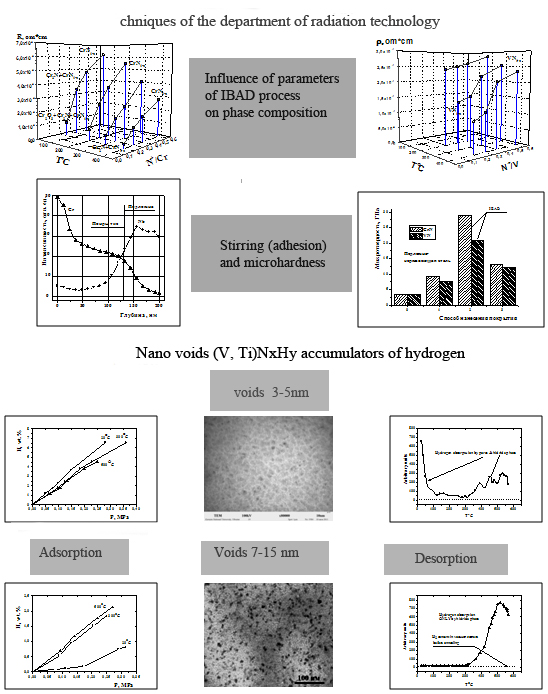Techniques of department of radiation technologies Methods of investigation
Methods of investigations:
- Secondary ion mass-spectrometry and mass-spectrometry of gaseous ions;
- Nuclear-physical methods;
- Electron microscopy
- Methods of adsorption;
- neutron spectroscopy;
- Electro-physical methods;
- nano indentation
Method of the production of nanocrystalline structures
Ion-induced deposition (IBAD method). In this technology metals are evaporated by electron-beam heating and deposited film is bombarded by beam of gaseous ions with energy of several tens of keV. This method is realized in two configurations: with horizontal arrangement of the source of gaseous ions and with arrangement of the gaseous ion source on the same flange with electron-beam evaporator, vertical arrangement).
Advantages of the method of ion-induced deposition
- high degree of the process irregularity allows deposit nanocrystalline coatings;
- increased temperature is not the necessary parameter of the process of deposition which gives the possibility to form fine-grained structure of films –closed packed and containing the microporosity;
- the source of ions and the source of vapor are used independently one another and this makes this procedure controllable, reproducible and flexible;
- possibility of films deposition practically from any metals and alloys;
- possibility to obtain multicomponent structures;
- possibility to change stoichiometry and structure on the stage of coating growth.
Ion-stimulated deposition
Advantages of the method:
- ВHigh degree of the process non - uniformity.
- ВIndependent adjustment of density of ion beam and rate of metal deposition.
- ВPossibility to obtain multi component structures.
- ВPossibility to change stoichiometry and structure on the stage of coating growth.


